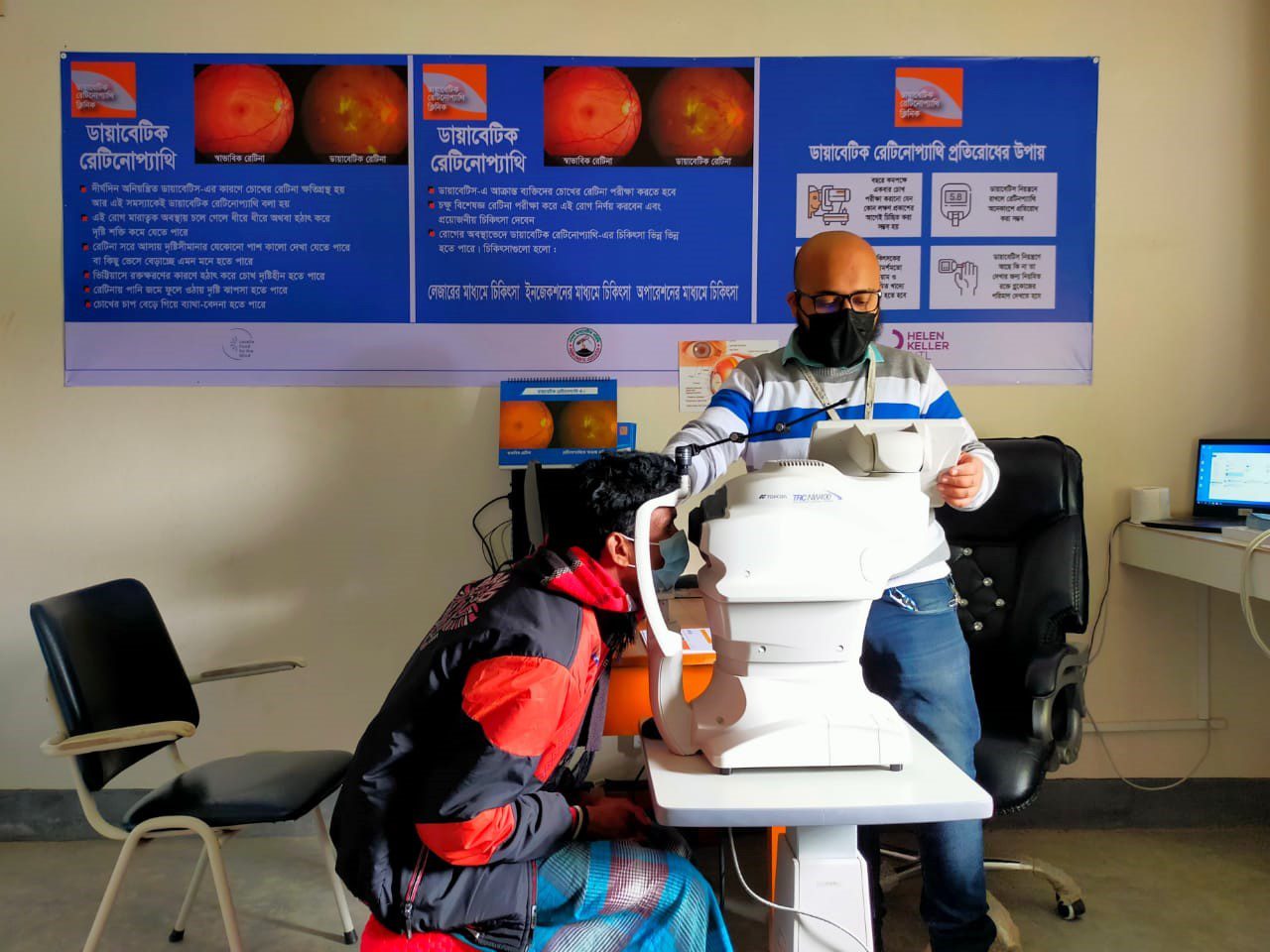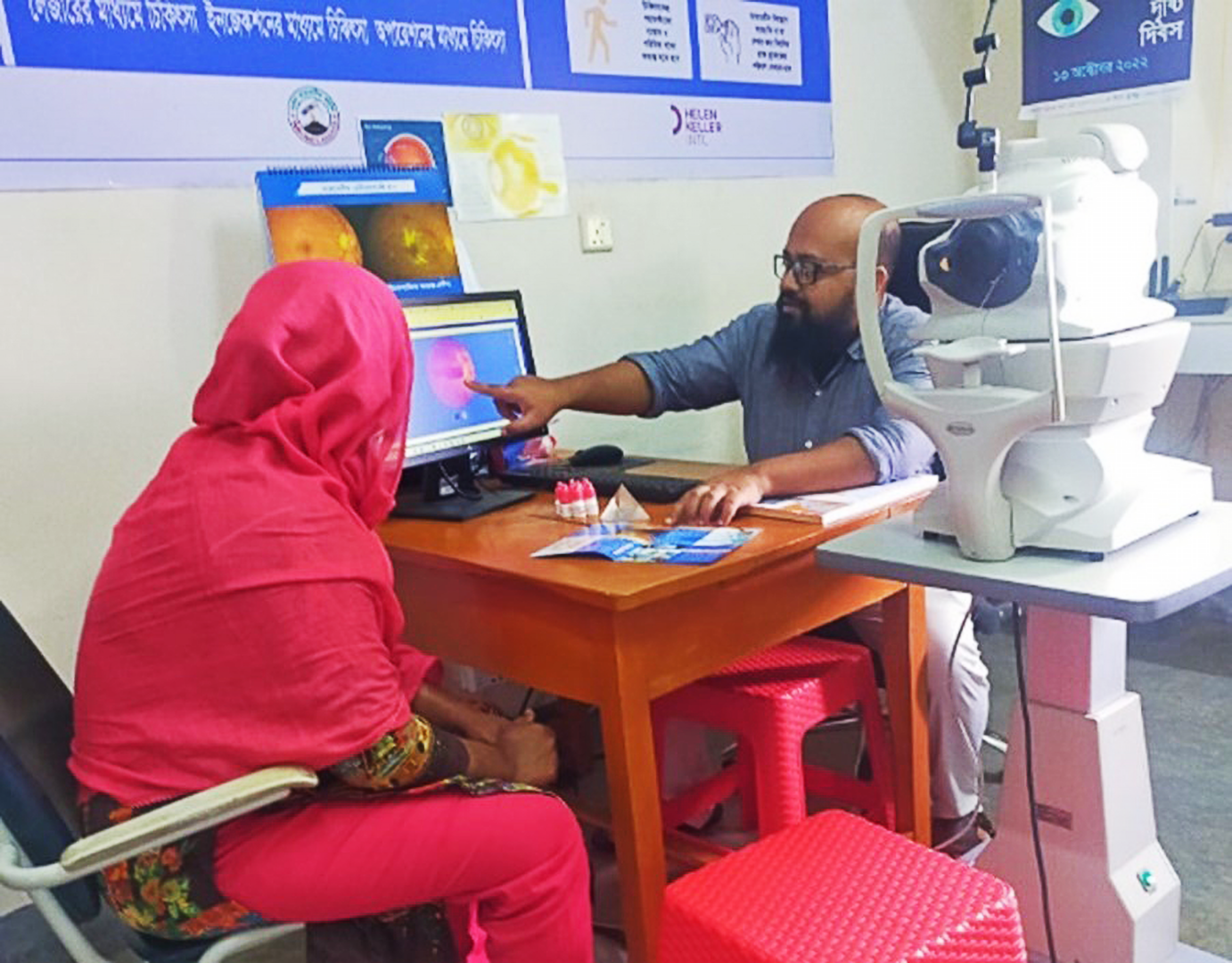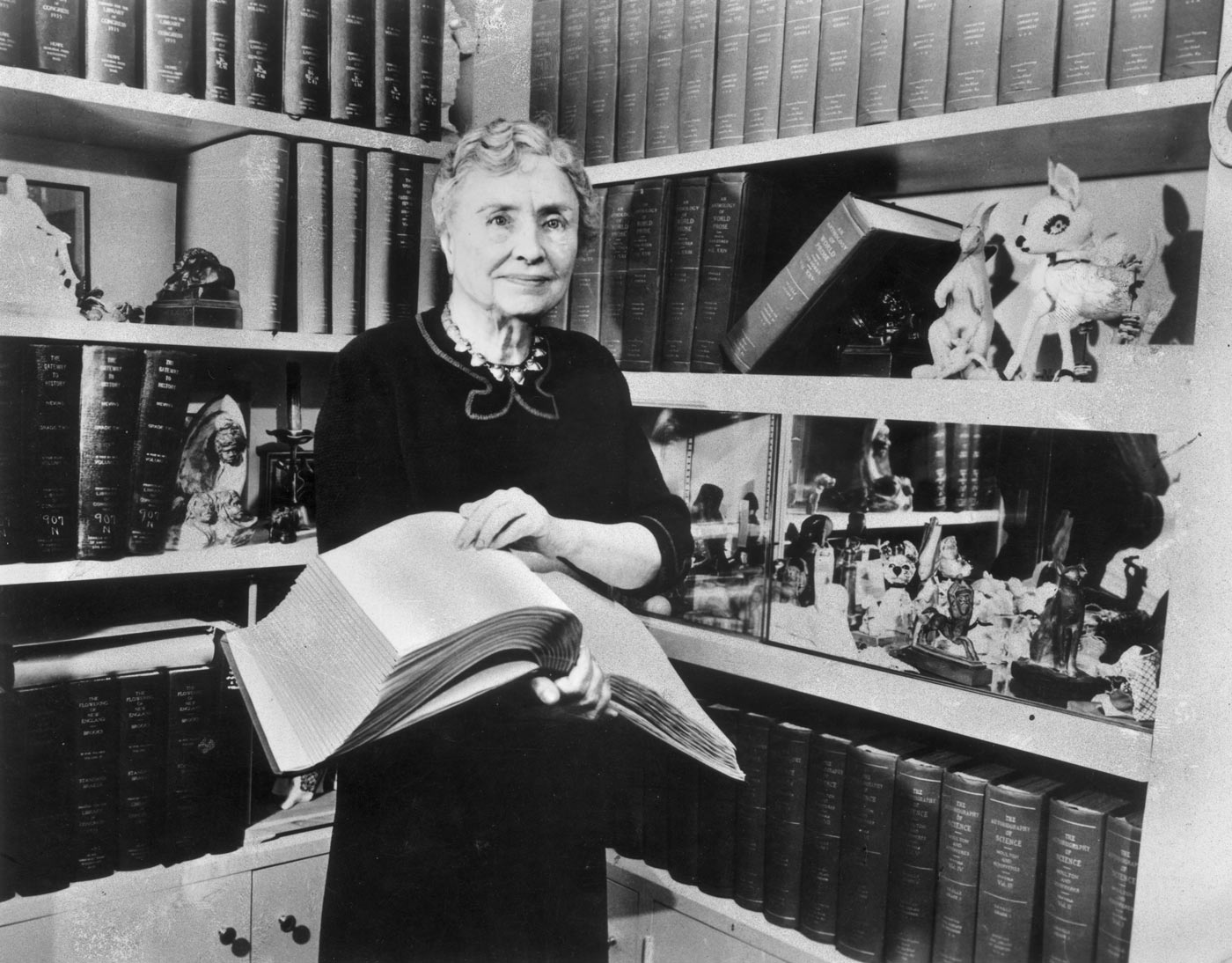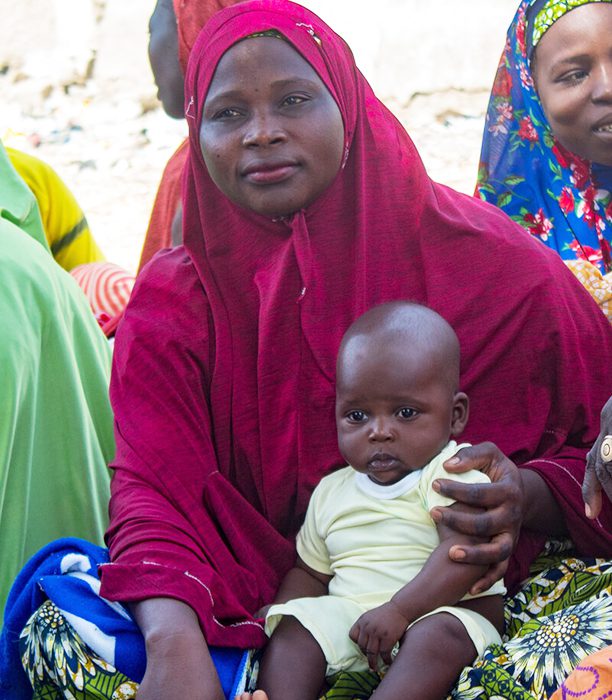
Preventing Vision Loss from Diabetic Retinopathy in Bangladesh
Nasima Khatun’s vision had been deteriorating for years. It had gotten so bad she was unable to recognize the faces of people she knew from a distance. Then one morning, the vision in her right eye suddenly became obscured by a what looked like a red cloud.
The 41-year-old first went to a local doctor in her community in the Pabna District of Bangladesh, to have her eyes examined, but he was unable to find the problem and the eye drops he prescribed did nothing to help.
A homemaker in a family of farmers, Nasima lives with her husband and mother and has two grown children. She was diagnosed with type 2 diabetes more than a decade ago and manages it by maintaining a healthy weight and taking medication.
I want to see the light of the world. I don’t want the world to be covered by darkness.
Nasima Khatun
When Nasima later visited the Pabna Diabetic Hospital to have her eyes examined, she was diagnosed with diabetic retinopathy, a condition that damages blood vessels in the retina of people with diabetes and can cause vision loss. Progressive deterioration and fluid leaking from one of the blood vessels of her right eye had caused Nasima’s sudden vision loss.
Nasima was distressed as the doctor explained her diagnosis, saying, “I want to see the light of the world. I don’t want the world to be covered by darkness.”
A Risk of Vision Loss for All Who Suffer from Diabetes
Everyone living with diabetes is at risk of developing diabetic retinopathy, especially if the disease is not well managed. Over time, uncontrolled blood sugar levels damage blood vessels of the retina – the area at the back of the eye that senses light and sends pictures to the brain. Although there may be no symptoms early on, progressive damage to the blood vessels can cause them to bleed. The retina may also grow new, abnormal blood vessels that are easily damaged. Research has shown that this condition may affect up to one-third of people with diabetes.
As rates of diabetes are increasing around the world, so are the number of people at risk of developing diabetic retinopathy. The International Diabetes Federation projects that 783 million – or 1 in 8 people – will be living with diabetes globally by 2045. Bangladesh is no exception to this upward trend.

Treatment, including injectable medication and lasers, can prevent diabetic retinopathy from progressing. However, it doesn’t usually help restore lost vision, which makes early detection and treatment critical.
Since 2009, Helen Keller Intl has been at the forefront of improving access to treatment and prevention of diabetes-related vision loss in Bangladesh. We partner with healthcare facilities that provide diabetes services to improve awareness of diabetic retinopathy and increase early detection and treatment by training healthcare workers, providing necessary equipment, and conducting community education. Through our partnerships, Helen Keller has helped establish new clinics and hospital units focused on diabetic retinopathy to increase access to care for low-income and rural communities and improve treatment for more advanced cases of the condition.
Regaining Sight and Protecting Against Future Vision Loss
At the hospital in Pabna, the doctor found that both of Nasima’s eyes showed signs of advanced diabetic retinopathy. The vision in her right eye was so seriously impaired due to the hemorrhage that she was unable to read the eye chart. She also had significant vision loss in her left eye.
She discussed her treatment options with the ophthalmologist on staff and Helen Keller helped refer her to another hospital for treatment. Over the course of several months, Nasima received a combination of laser treatment to shrink the damaged blood vessels and injections of a medication that reduces the growth of blood vessels to help prevent additional damage.
Thank you for identifying the problem, otherwise I would be blind.
Nasmia Khatun
While the treatments couldn’t fully restore her vision, Nasima regained much of the sight in her right eye that had been obscured by the hemorrhage and the vision in her left eye also improved. She said could see “much more clearly” after the treatment.
“You people are doing good work here, keep on helping people like us,” Nasima says, adding, “Thank you for identifying the problem, otherwise I could be blind.”

Help people living with diabetes like Nasima protect their vision.




